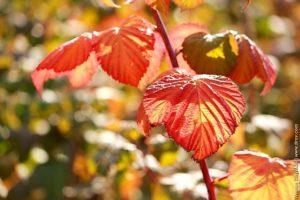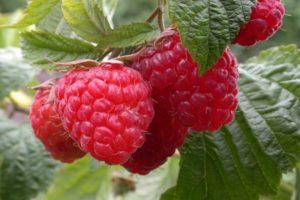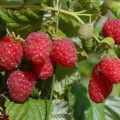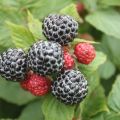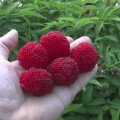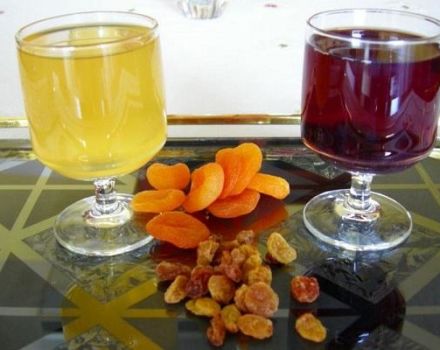Description of the remontant variety of raspberries Polka, yield, planting and care
Among all varieties of raspberries, the Polka remontantnaya variety is in high demand. The popularity of this plant is due to its abundant yield. Unlike Polka, other raspberry varieties bear fruit only in the middle of summer. This type of culture is capable of producing berries before the onset of the first cold weather. Moreover, as the official description of the plant says, raspberries are resistant to most diseases and unpretentious in terms of care.
Description and characteristics of raspberry polka
The first fruits of the Polka raspberry variety bear the end of July. However, the berries remain on the bushes for the next three months. Moreover, the first fruits appear already in annual plants.Raspberry yields up to twice a year. This is explained by the fact that both old and new shoots bear fruit..
Another feature of the culture is that the berries are able to ripen even at temperatures down to minus 2 degrees. The average yield per bush is 3.5 kilograms. Moreover, this indicator largely depends on the region of growth. In warmer regions, the plant produces more berries.
Polka raspberries have the following characteristics:
- medium-sized variety, the height of which does not exceed two meters;
- stems are straight and strong;
- spines on stems are poorly expressed;
- the presence of a powerful root system makes it possible to do without an installed support;
- each seedling gives up to 10 offspring, which can be used for planting;
- fibrous root structure, due to which the plant gives little growth.
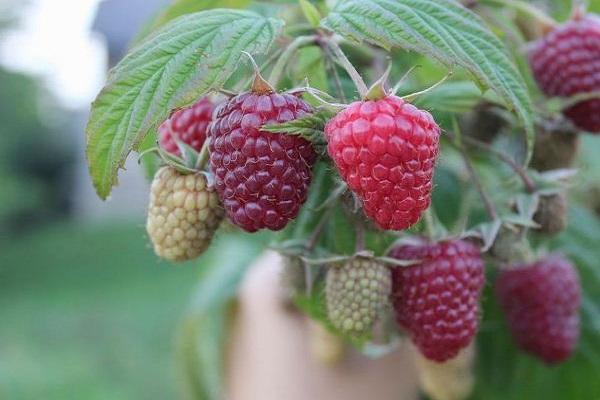
Raspberries of this variety are collected in bunches, 10 pieces in each. Conical fruits reach a length of three centimeters. The weight of the berries does not exceed 12 grams. Raspberry Polka has a pleasant taste, which provides a balanced combination of acid and sugar.
What are the advantages and disadvantages?
Raspberries of the Polka variety have the following advantages:
- the taste of berries is recognized as a reference;
- raspberries are transportable and suitable for industrial scale cultivation;
- high productivity;
- the fruits do not fall from the bush;
- increased resistance to common diseases and pests.
The culture does not tolerate frost and drought. Therefore, the plant must be covered before winter, and watered abundantly in summer. If planting is carried out in depleted soil, you will need to constantly feed the raspberries in order to obtain a sufficient yield.
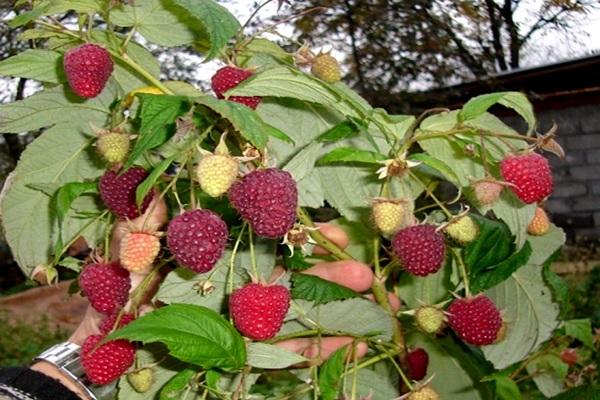
How to grow a variety correctly?
The yield of the crop largely depends on compliance with the rules for planting raspberries.
Pick up time and place
Polka raspberries are usually planted in late September or early October. A month before the onset of cold weather, the plant has time to take root. Can also be planted in spring, before the first leaves appear.
Sunny areas are suitable for raspberries. The crop produces a bountiful harvest with sufficient watering. But in waterlogged soils, the plant gets sick. Therefore, it is recommended to plant bushes in areas where groundwater occurs at a depth of at least one meter.
Light or slightly acidic loams are considered optimal soil for a plant.
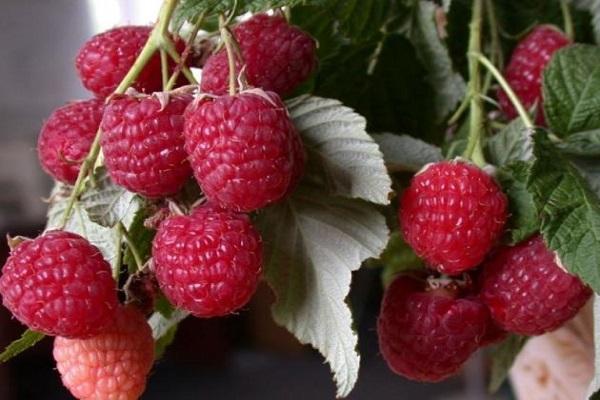
Preparation of seedlings
Seedlings with the following characteristics are suitable for planting:
- the length of the root system is more than 20 centimeters;
- there are no stiff growths;
- trunk thickness - more than 5 centimeters;
- the number of kidneys is more than two.
The day before planting, the seedlings must be dipped into a solution of clay (earth) and water, mixed to a creamy state. Additionally, it is recommended to add mullein, root growth stimulant or diluted chicken manure to this composition.
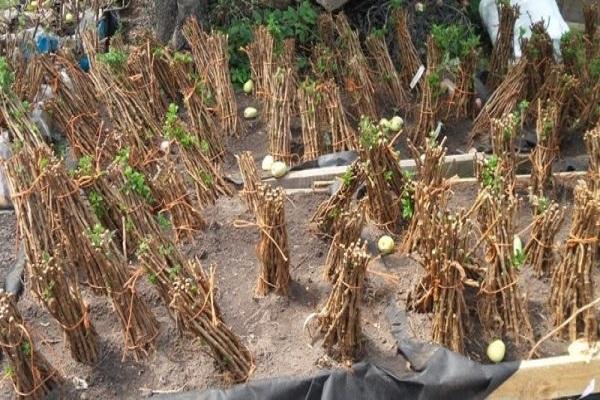
Planting scheme and process
Raspberry seedlings are planted at a distance of 70 centimeters. Rows with plants should be 1.5 or 2 meters apart from each other. Before planting, the soil is pre-mixed with 50 grams of potassium sulfate, 70 grams of superphosphate and 20 kilograms of humus (the proportions are calculated for 1 square meter).
Seedlings must first be placed in prepared holes, spreading the root system. After that, you need to fall asleep and lightly tamp the earth. At the same time, the root collar should remain at ground level. At the end of planting, the plant is watered abundantly with water. After the moisture has been absorbed, mulch the soil around the seedling using straw, grass or compost.
The subtleties of plant care
Raspberries do not have serious care requirements. It is important for the plant to provide sufficient watering. You will also need to regularly feed and tie the stems.

Watering and loosening
In order to prevent infestation around the bushes, it is necessary to remove weeds. Due to the fact that Polka bears fruit for three months, the plant has to be watered from spring to late autumn. In dry weather, it is recommended to add one bucket of water under each bush weekly. Shortly before the onset of cold weather, the watering order changes. During this period, it is necessary to bring 2-3 buckets of water under each bush.
Fertilization
In the spring, until the snow is similar, for every 1 square meter of planting area, 30 grams of urea must be added. Shortly before bud formation, it is recommended to fertilize the plant with a mixture of:
- three grams of nitrogen fertilization;
- two grams of phosphoric;
- three grams of potassium salt or wood ash;
- 1.5 kilograms of humus.
During the flowering period, as well as every month of fruiting, the plant should be fed with infusion of mullein or chicken droppings (in a ratio of 1: 5/1: 10, respectively). With the onset of autumn, after pruning, manure or humus is introduced, one bucket per meter.
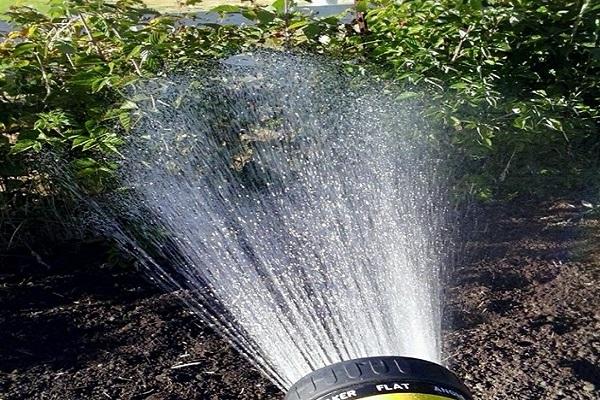
Mulching
Polka raspberries are mulched, mainly after planting. To do this, use straw, chopped corn stalks, humus or onion husks. If the summer is dry, mulching is recommended to be carried out more often, since after this procedure the soil remains moistened longer.
Garter plants
There are several ways to tie. More often in relation to the Polka raspberries, the fan method is used. The latter provides for installation on poles near the bushes of a wire mesh, to which branches are attached at an acute angle of 15-18 degrees. This option will ensure the best preservation of fruits, both in dry and sunny, and in rainy summers.
Raspberry pruning
Polka raspberries are pruned in different ways. If the owner of the plot plans to get only one harvest per season, then after picking the berries, all the stems are removed at the root. The second option allows you to get ripe fruits twice a season. To do this, in the first year after planting, in the fall, cut off the upper part of the stems above a viable bud. As a result, next summer it will first be possible to get a crop on the side branches, and closer to autumn - on the main one.

Preparing for winter
The procedure for preparing for winter depends on the selected pruning option. Polka does not tolerate frost well. Therefore, before the onset of cold weather, it is recommended to cut branches at the root. If the second option is chosen, then it is necessary to press the Polka shoots to the ground with trellises before winter and close it with a double layer of agrofibre.
Treatment of crops from diseases and insects
To prevent the appearance of pests on raspberries, it is necessary to remove foliage and grass from the bushes after winter and periodically weed the ground during the warm season. It is also recommended to treat the soil in the spring with Bordeaux liquid or a solution of copper sulfate. In the fight against insects, Aktofit, Alatar and Aktara preparations help well.
Bordeaux liquid helps to cope with the fungal disease anthracnose. To prevent infection of the bushes, it is necessary to transplant raspberries to a new place once every 1-2 years, and apply manure every season.

Breeding raspberry polka
Raspberry Polka gets divorced:
- Offspring. To do this, young shoots with roots are dug out, then they can be immediately moved to a new place, leaving 2-3 leaves.
- Offspring with leaves. In this case, you will first need to withstand the shoots in an earthen mash (a mixture of clay and water), and then transplant them into open ground.
- Root cuttings. To do this, it is necessary to cut off cuttings more than two millimeters thick with 2-3 buds from the bush. Then the planting material is grown in pots and transplanted into the ground.
Also, gardeners often divide the bush into parts in spring or autumn, which are then transplanted to a new place.

Harvesting and storage
Ripe berries begin to be harvested in the second half of August and finish shortly before the onset of cold weather. Raspberries should be stored in a container, covering up to 15 centimeters thick. In the refrigerator, the berries are stored after picking for 7-10 days.
